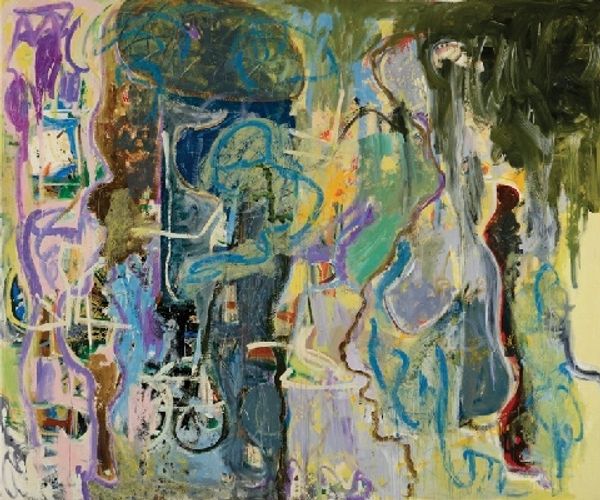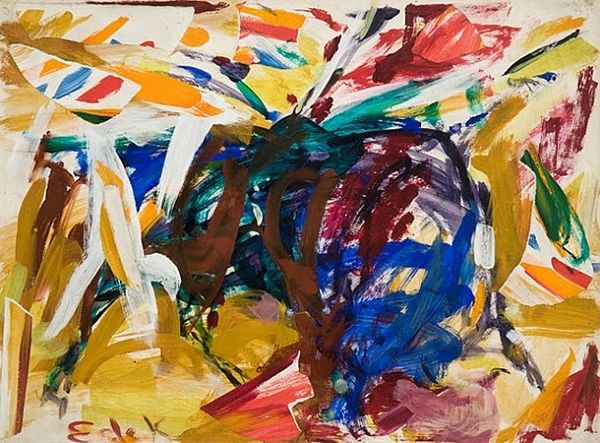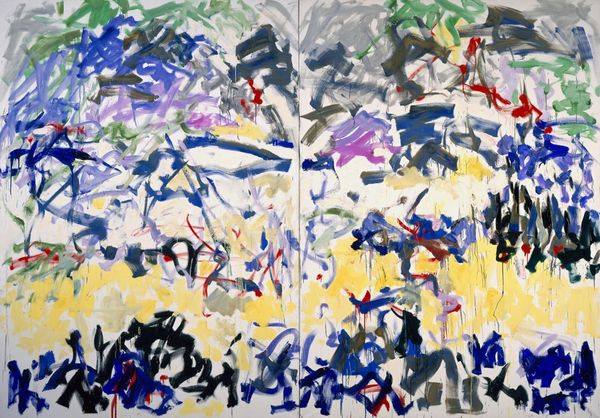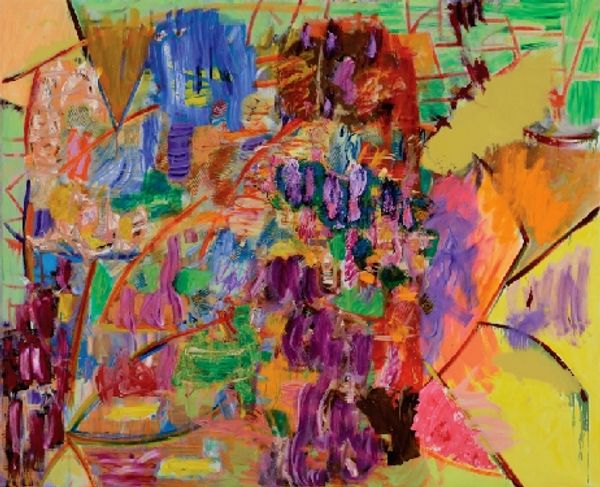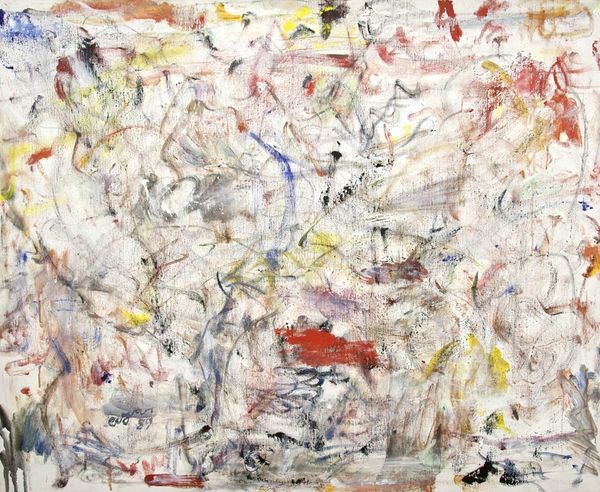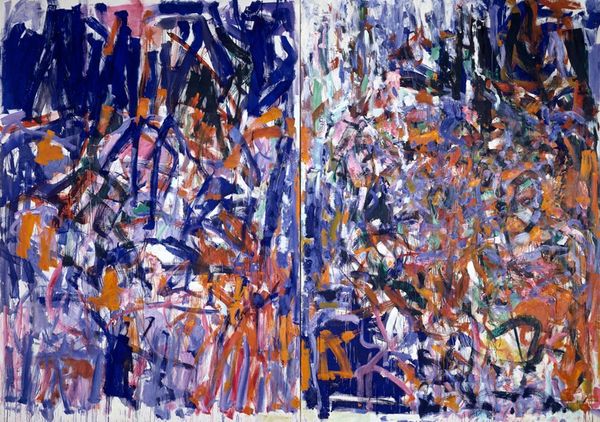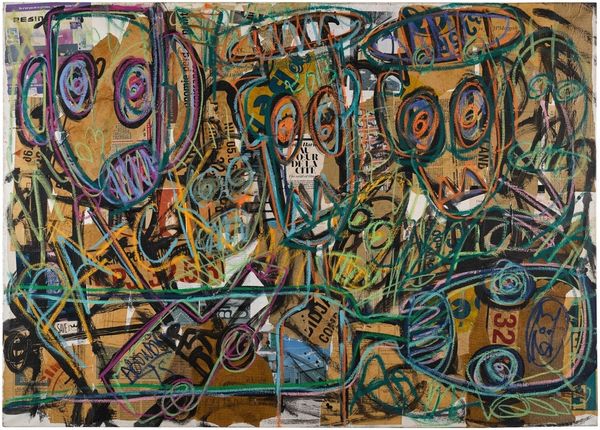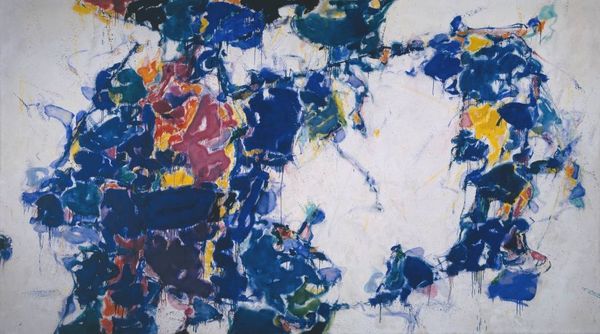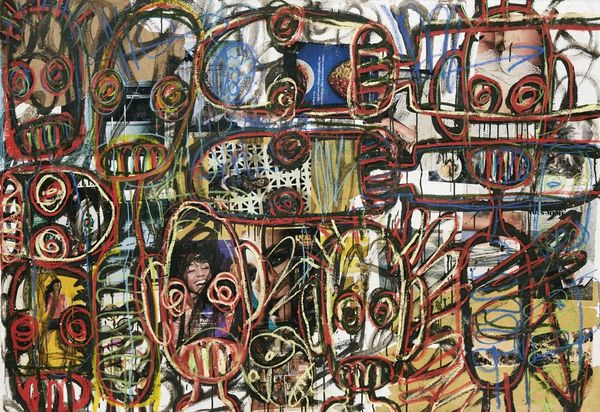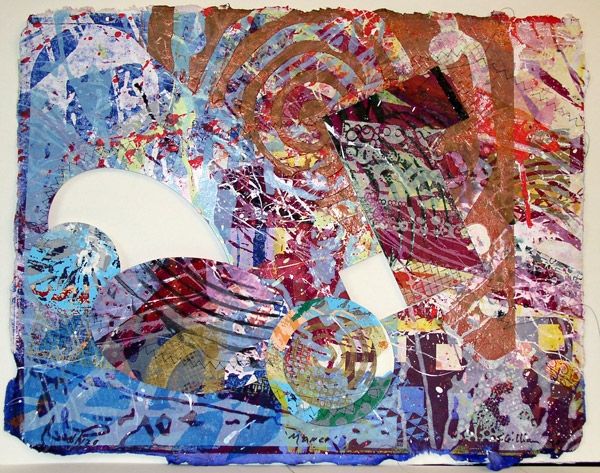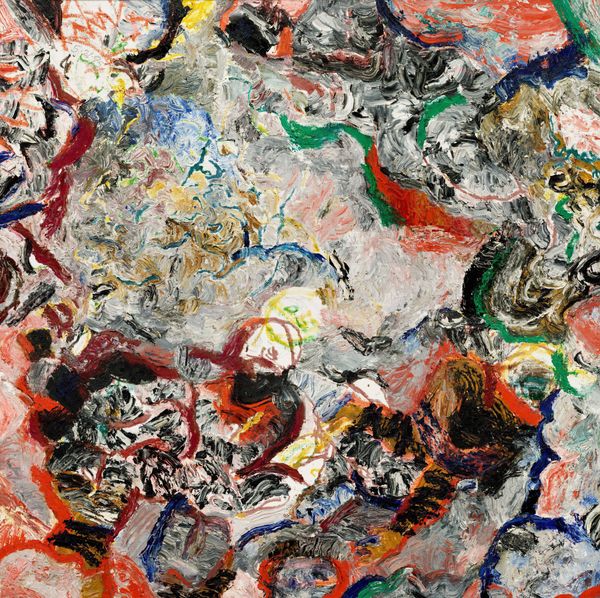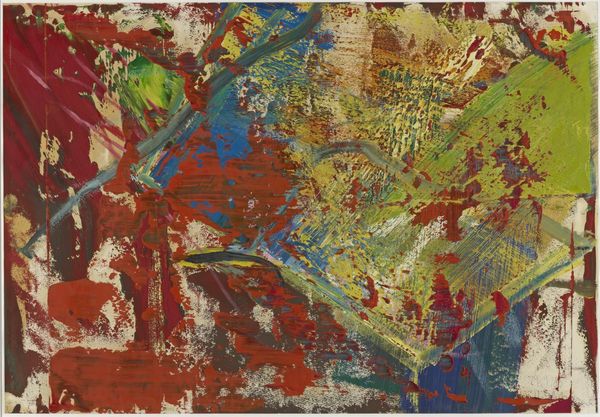
#
abstract expressionism
#
abstract painting
#
handmade artwork painting
#
tile art
#
fluid art
#
acrylic on canvas
#
street graffiti
#
paint stroke
#
painting art
#
expressionist
Dimensions: 177.8 x 444.5 cm
Copyright: Gary Wragg,Fair Use
Curator: This is Gary Wragg's "Promenade," created in 1978 using acrylic on canvas. Editor: My first impression is pure energy. The density of the brushstrokes and layered colors feels incredibly kinetic. It almost overwhelms the eye, doesn’t it? Curator: Absolutely, and Wragg was a significant figure within the British abstract expressionist movement. Consider the cultural climate of late 1970s Britain— economic downturn, social unrest. This piece resonates with a raw, visceral response to that period, almost like a visual scream against the backdrop of Thatcherism on the horizon. Editor: A scream perhaps, but structured. Note how he contains that energy through composition—the horizontal format provides a visual anchor, and the variations in texture offer points of respite amidst the chaotic energy. Look closely, for example, at how the darker, swirling areas are balanced by more open, lighter fields. Curator: It is compelling, given his biography, that Wragg embraced abstraction so emphatically. As someone coming from a working-class background and attending art school during a time of significant social upheaval, it's intriguing how he sheds the weight of representation and turns inward. Editor: Indeed, and through that turn, consider how he manipulates the very properties of paint—the viscosity, the layering, the directionality of the brushstrokes—to build a world within the canvas. The interplay of thick impasto and thinner washes is quite masterful. Curator: I see it as a powerful commentary on individual experience versus collective identity within a specific historical moment. Wragg's artistic practice engages in dialogue with issues of class, gender, and the socio-political milieu. He allows the canvas to become a site of cultural memory, while pushing the boundaries of contemporary abstract painting. Editor: An apt consideration. And stepping back, perhaps, its power lies in that very tension between structure and chaos. Curator: Ultimately, Wragg compels us to consider art as both an aesthetic object and a form of social and political resistance. Editor: Precisely. The painting then prompts questions, as do all effective works of art.
Comments
No comments
Be the first to comment and join the conversation on the ultimate creative platform.

